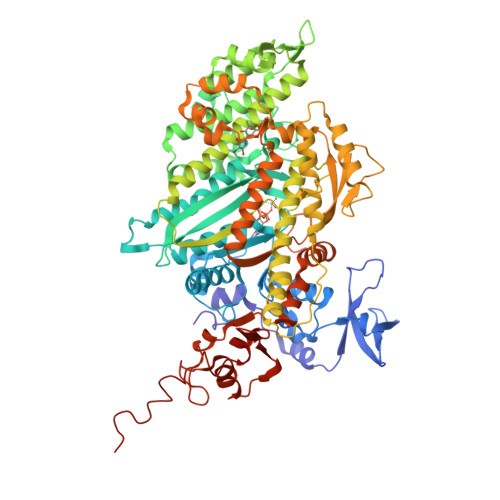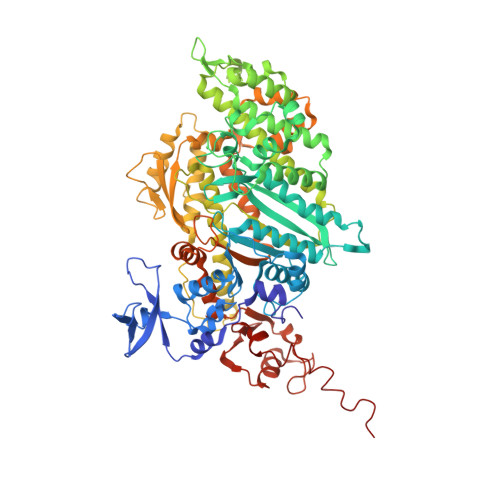Inhibition of Myosin ATPase Activity by Halogenated Pseudilins: A Structure-Activity Study.
Preller, M., Chinthalapudi, K., Martin, R., Knolker, H., Manstein, D.J.(2011) J Med Chem 54: 3675
- PubMed: 21534527
- DOI: https://doi.org/10.1021/jm200259f
- Primary Citation of Related Structures:
2XO8 - PubMed Abstract:
Myosin activity is crucial for many biological functions. Strong links have been established between changes in the activity of specific myosin isoforms and diseases such as cancer, cardiovascular failure, and disorders of sensory organs and the central nervous system. The modulation of specific myosin isoforms therefore holds a strong therapeutic potential. In recent work, we identified members of the marine alkaloid family of pseudilins as potent inhibitors of myosin-dependent processes. Here, we report the crystal structure of the complex between the Dictyostelium myosin 2 motor domain and 2,4-dichloro-6-(3,4,5-tribromo-1H-pyrrole-2-yl)phenol (3). Detailed comparison with previously solved structures of the myosin 2 complex with bound pentabromopseudilin (2a) or pentachloropseudilin (4a) provides insights into the molecular basis of the allosteric communication between the catalytic and the allosteric sites. Moreover, we describe the inhibitory potency for a congeneric series of halogenated pseudilins. Insight into their mode of action is gained by applying a combination of experimental and computational approaches.
Organizational Affiliation:
Institute for Biophysical Chemistry, Hannover Medical School, 30625 Hannover,





















